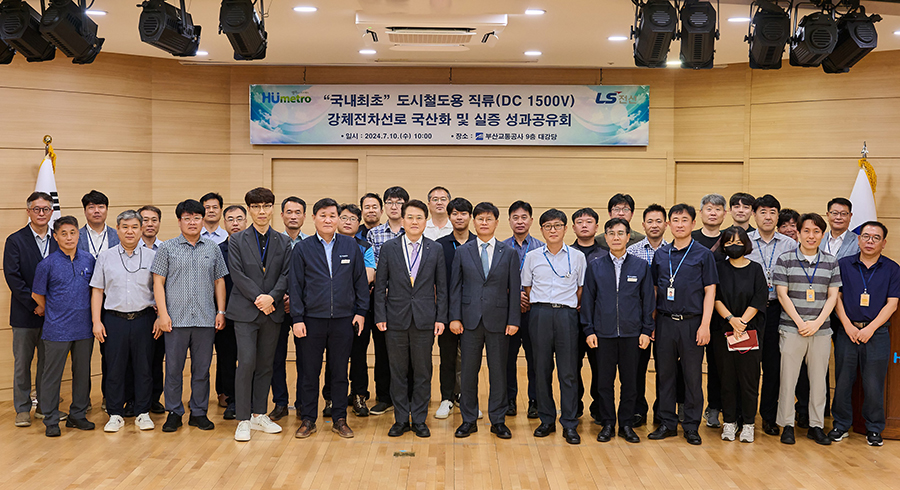NEWS
| Title | LS Cable & System Achieves Domestic Production of Rigid Bar for Metros |
|---|---|
| Date | 2024-07-11 |

Photograph) Attendees of the Performance Sharing Meeting for the Domestic Production and Verification of Rigid Bar for Metro held at the head office of the Busan Transportation Corporation in Busan City on the 10th pose for a photo. (From the fourth from the left in the front row) Director Lee Jong-wuk of the Instrument Business Division of LS Cable, Director Shin Byeong-tae of the Electrical and Environmental Machinery Department of the Busan Transportation Corporation, Director Nam Gi-jun of the Communication/Industrial Solution Research Center of LS Cable & System, Director Jo Eun-je of the Technology Division of the Busan Transportation Corporation, Director Oh Yeong-seop of the Future Growth Center of the Busan Transportation Corporation, Director Jo Hyeon-bong of the Equipment Construction Department of the Busan Transportation Corporation
■ To replace old Japanese product, reduce tunnel construction and replacement costs by 30% and 80%, respectively
■ Verification completed with Busan Transportation Corporation, application to subways across the country expected
LS Cable & System announced on the 11th that it had achieved domestic production of DC rigid bar (R-bar) for metros.
R-bar is a structure with a trolley line for power supply integrated with a bar made of an aluminum alloy. The straight bar is mainly used in narrow spaces such as the tunnels and underground sections of metros.
Metros, which operate at low speeds, mainly use DC 1,500 V electricity. As this is the first DC R-bar developed in Korea, Japanese T-bar and catenary (overhead trolley line) have been used to date.
Compared to T-bar, R-bar has a simpler structure, and therefore provides greater economic efficiency and convenience in installation and maintenance. By using it, tunnel construction and trolley line replacement costs can be reduced by up to 30% and 80%, respectively, and emergency recovery for trolley line replacement and failure will be improved.
“The old T-bar is not longer used in other countries,” said a company official. “As most metro lines in Korea are over 30 years old, we expect that demand for replacing the old T-bar and catenary with R-bar will be high.”
Recently, LS Cable & System conducted a performance and stability verification by establishing test facilities on the lines operated by the Busan Transportation Corporation.
The domestic production project, promoted as a national project of the Ministry of SMEs and Startups, was jointly participated in by electric railway equipment manufacturers Welco and Jaeyoung Tech. MY Power, a Busan-based installation company, handled the test facility installation while the Busan Transportation Corporation supported the R&D performance creation of the public-private partnership by providing a testbed.
Director Jo Eun-je of the Technology Division of the Busan Transportation Corporation said, “Moving forward, we will improve the stability and efficiency of metros by introducing innovative technologies.”
LS Cable & System developed the first AC R-bar in Korea in 2013 and commercialized it through application to the Bundang Line, Sosa-Wonsi Line and Suin Line




